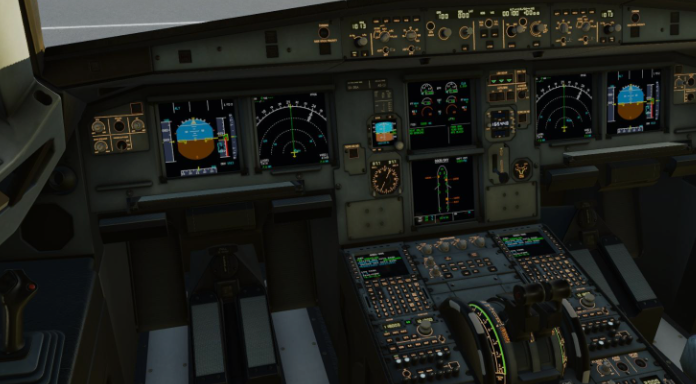The Evolution of Flight Simulation
Since the dawn of aviation, the quest for improved methods of learning to fly has been a priority for pilots and instructors alike.
The military was among the first to discover the benefits of flight simulation, enabling pilots to grasp the fundamentals of flying
without risking lives or equipment. Exact replicas of aircraft cockpits were created, and to further enhance the experience,
simulators were placed on movable platforms to mimic the physical forces experienced during actual flight.

As general aviation gained popularity, flight schools recognized the potential of simulators to teach essential aircraft operations.
Soon, instructor-led flight simulations began to incorporate scenarios like air traffic control and basic ground operations, providing
a comprehensive training experience.

The advent of personal computers revolutionized flight simulation. Early software was available on systems like the Apple II,
Commodore 64, and Atari Computers, offering rudimentary simulations that captivated aspiring pilots.

As personal computers became
more powerful, flight simulators evolved significantly, featuring enhanced graphics and sound. Notable programs such as
Microsoft Flight Simulator, X-Plane, and Prepar3D emerged, providing immersive simulations that featured realistic scenery and a
diverse range of aircraft—from small general aviation models like the Cessna 150 and Piper Archer to large commercial airliners
like the Boeing 747 and Airbus A320.


Alongside these advancements in software, a variety of flight controls were introduced to enhance realism. Accessories such as Flight Yokes, Joysticks, Rudder Pedals, Throttle quadrants, and Radio and Navigation platforms allowed users to interact with the simulation in a tactile way. This accurate navigation capability transformed the experience, making it feel more authentic than ever before.
The rise of artificial intelligence (AI) has further expanded the possibilities within the flight simulation community. Features like realistic air traffic control, co-pilots, and combat sorties can now be simulated, enhancing the depth of training and enjoyment. These sophisticated flight simulation offerings are compatible with various operating systems, including Microsoft Windows, Apple macOS, and Linux.